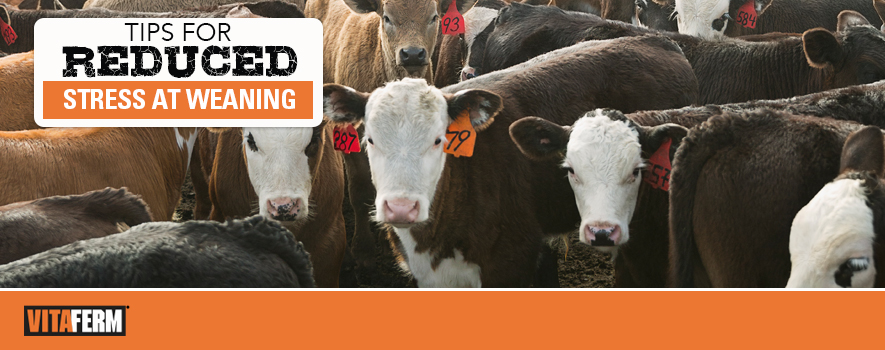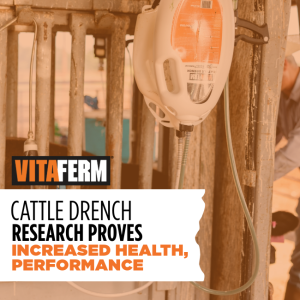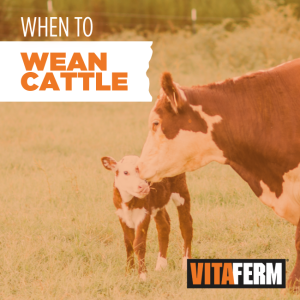
If you’ve ever had a young child, think back to his or her first days of school. The word that might come to mind is chaos. Learning a new bus or drop-off routine. Do you pack a lunch or eat the school’s hot lunch? Does your sweetie have a book bag? Item for show-and-tell? The required school supplies? It might sound a little chaotic, and for a cattle producer, that chaos might resemble weaning time.
Yes, it is the most stressful time in your calf’s life. Until now, your calves have had it pretty good. Though the young calves were hopefully exposed to some type of mineral tub or loose supplement, mama cow was always right there with the next meal. And she has always been there to “wash” that tough-to-reach-spot behind the ears. Then one day, the producer gathers pairs and sorts the cows from the calves, and at just 6 or 7-months of age, the calves are weaned and have to learn survival on their own.
At weaning calves are faced with several immediate changes: environment, herd groups, nutritional intake and all while be separated from their mother. And while weaning can be very stressful to the calves, the same period can also be stressful on the producer who strives to keep the calves healthy, eating and growing all during this time of transition.
Kevin Evans, Thaler Land & Livestock at LaGrange, Wyo., offers some practical advice to reduce stress in calves at weaning time.
“It’s critical to get these calves off to a good start. Keeping them healthy at weaning not only helps in increased rate of gain, it helps keep our expenses down in vet bills and cost of labor to treat sick calves,” Evans said.
- Choose a nice day. Evans said he picks a day when Mother Nature is on his side, and he pays attention to the long-range forecast as well. “We don’t wean right before a weather system moves in.”
- Provide necessary vaccinations. Thaler Land & Livestock takes a proactive approach to animal health and provides needed vaccinations to their calves at weaning time to keep them healthy. This also helps ensure that they don’t have to treat sick calves in just a few weeks.
- Provide high-quality supplements like Vita Charge®. Prior to incorporating Vita Charge into his weaning protocol about three years ago, Evans said he would treat up to 10 sick calves a day for the first 30 days of weaning. Now, sick calves aren’t an issue because the calves are eating, drinking and keeping their digestive system in check. “When we wean, we go right to Vita Charge Drench. Those calves seem to come out of the drench, hit the Vita Charge Stress Tubs, and go straight to the bunk. I’ve had no issues the last three years that we’ve used the products.”
The Vita Charge Drench and Stress Tubs contain Amaferm® organic zinc and essential vitamins to stimulate the immune system and to ensure that feed intake stays consistent. Added enzymes and B-vitamins work with Amaferm to generate a more rapid digestive response. Amaferm is a precision prebiotic designed to enhance digestibility by amplifying the nutrient supply within for maximum performance. They both also contain MOS that traps bad bacteria limiting their ability to do harm.
“I believe in Amaferm a lot, mostly because I’ve seen the difference in the cattle’s consumption,” Evans said. “And I firmly believe if you’ve got a healthy gut in your cattle, you have a healthy animal.”
Just like young children heading back to school, weaning can be a stressful, even chaotic time in the young calves’ lives. Even recovered cattle performance and ultimately carcass value are impacted by sickness and morbidity early in life. But with proper planning, a good health and vaccination program, the chaos and stress on the calves can be reduced. Now, if only buying school supplies was as simple.


